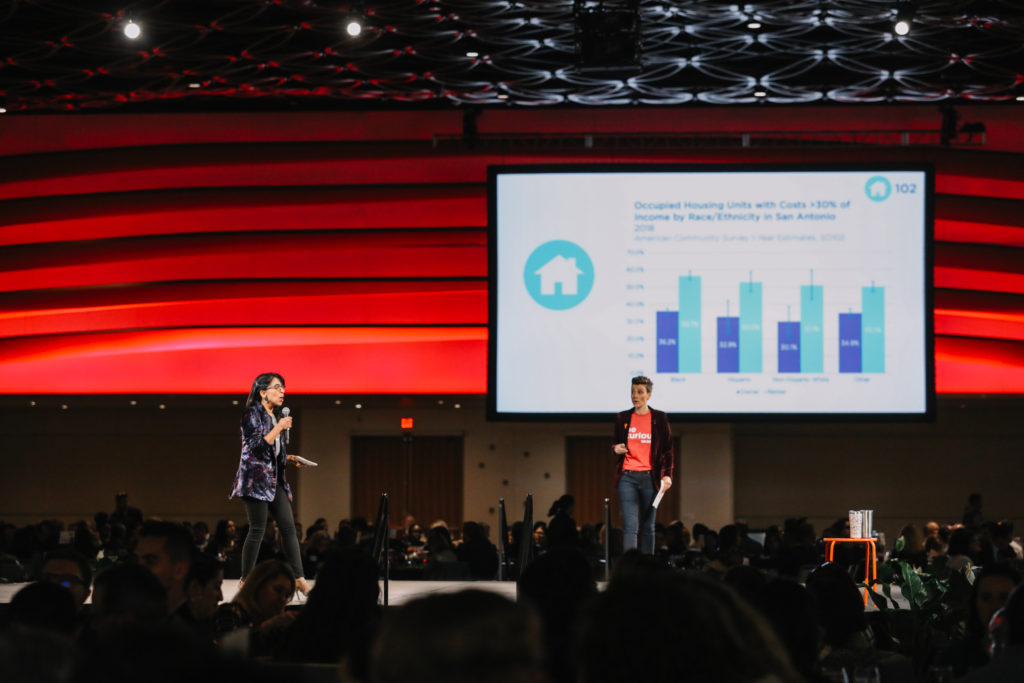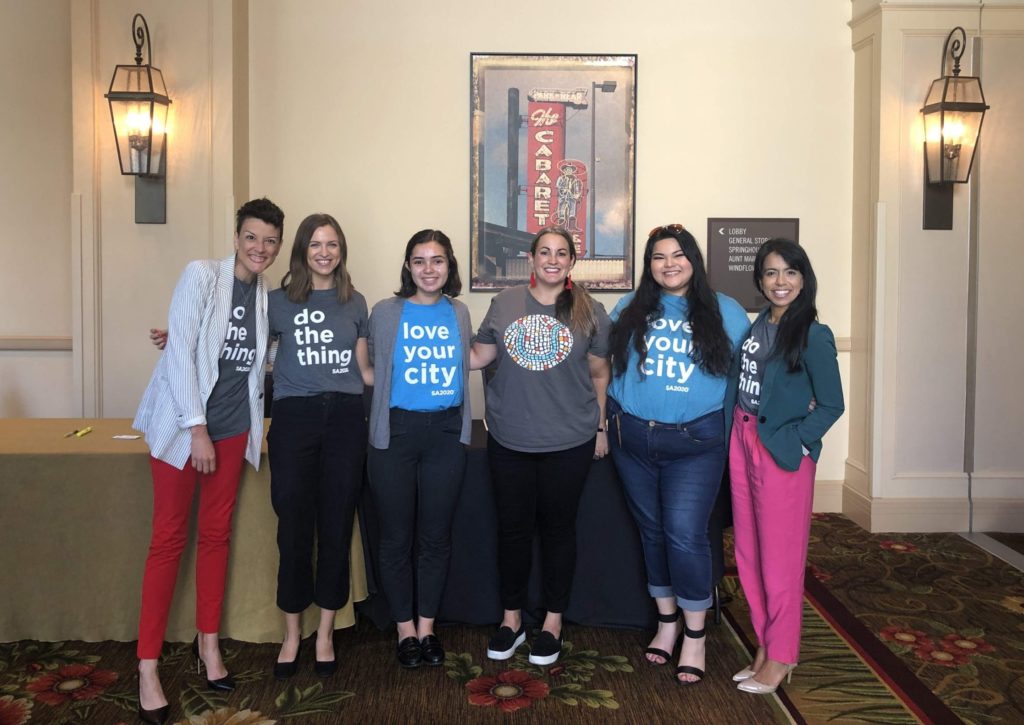More and more, I sign off emails, calls, texts, meetings, and conversations with “take care.” As my power grows with the title of President & CEO at SA2020, in the middle of a pandemic and on the heels of a devastating storm, I can’t stop thinking about what it means to practice taking care through policy and practice.
We plan to hire two full-time team members over the next 6 weeks. What does it look like to lead a hiring process that takes care?
All the research, including my own experience, has proven that hiring processes are ripe for discrimination and bias—inflated education requirements, resumes judged by names and home addresses, interview questions changing with each candidate, salary offers based on a person’s earning history, and more.
I learned how to apply for jobs in graduate school. A career counselor helped me revise cover letters and gave me tips like dropping a handwritten note in the mail after an interview. She answered every question I had about prospective jobs, making herself available to me even after I graduated. This one-on-one coaching, so early in my career, has made me a more competitive candidate in every interview since.
One-on-one coaching helps people navigate the discrimination and bias, too. Over the years, mentors have advised me to remove the year I graduated college and dress conservatively for interviews to mitigate ageism and sexism.
Hiring processes, simply put, can be traumatic with real life consequences for workforce inequities across the community.
I was once asked, in the aftermath of 9/11 and at the height of hate-based violence against Sikhs and Muslims, if it bothered me that my name autocorrects to “Koran.” (It does not.) Another time, I was interviewed and hired for a position by phone. When I arrived in person, my new boss blurted, “I thought you were… Irish.” I once went to submit my paperwork after assurances that the salary offer accounted for the full breadth of my education and experience only to have the hiring manager slide my graduate school transcript back to me saying, “This doesn’t count” without meeting my eye.
What does it look like to lead a hiring process that takes care?
In 2003, researchers at MIT and the University of Chicago tracked 5,000 resumes submitted for more than 1,000 jobs with either traditional “White-sounding” names (i.e. Brendan, Gregg, Emily, and Anne) or traditional “Black-sounding” names (i.e. Tamika, Aisha, Rasheed, and Tyrone). They found that the resumes of the “White-sounding” names received 50 percent more responses.
What might it look like, then, to lead a hiring process that builds trust with prospective team members? Where the organization takes responsibility for leading a process full of integrity? Where the details of the hiring process are seen as meaningful ways to advance racial equity?
Job descriptions are a good place to start. At SA2020, our education and experience requirements have long been interchangeable, making sure we don’t devalue prospective candidates with competitive experience due to a lack of formal education. In San Antonio, 33.9% of the adult population has a two-year degree or higher, compared to 22.5% who have some college but no degree and 26.3% who have graduated high school. Allowing relevant professional experience to take the place of a professional certificate or advanced degree better invites the full breadth of the community’s talent to join our team.

Given our organization’s mission and five-year plan, this year we made the ability to meaningfully advance racial equity as a required skill, not a preference, for every position. We exhaustively documented preferred qualifications to identify how we can all grow on the job. These help inform each team member’s professional development goals, which we support with a professional development fund and reflect on quarterly as a team.
We share all of this on our hiring page, which we created with transparency and care in mind. There’s no mystery as to when applicants will hear from us, who exactly will lead interviews, when we’ll ask about references, how we approach salaries, or what benefits we have.
This year, we even documented a compensation philosophy that includes three overlapping salary ranges for managers, directors, and the President and CEO. This narrowed the gap between each range and created a wider range for managers and directors to grow within the organization. The process of writing a compensation philosophy increased our trust, engagement, and commitment to each other and the organization. By sharing it, we hope to do the same with prospective team members.
This is not to say that our process is perfect. I’m proud of what we’ve accomplished, and it has taken work. Moving from valuing equity to practicing equity will always require work. Community Results under San Antonio’s shared Community Vision directly call for it: “Institutions across sectors value community-based knowledge and build trusted relationships,” “We provide the best education in the nation and lifelong learning opportunities,” and “San Antonio ensures the economic well-being of the people who live here.”
As we learn more, we strengthen our policies and practices. We learn more by researching and hearing other people’s experiences and questions. Do you have a best practice that you champion from being on either side of the hiring process? What kinds of questions come up for you as you read our hiring page? I want to hear the stories you’re willing to share and your questions. They will help us see what’s missing in our strategy and communications.
If you work at a nonprofit and have influence over strengthening the hiring process, we hope you find our hiring page a resource. What’s one thing, in the next 30 days, you can commit to doing better in your hiring process?

